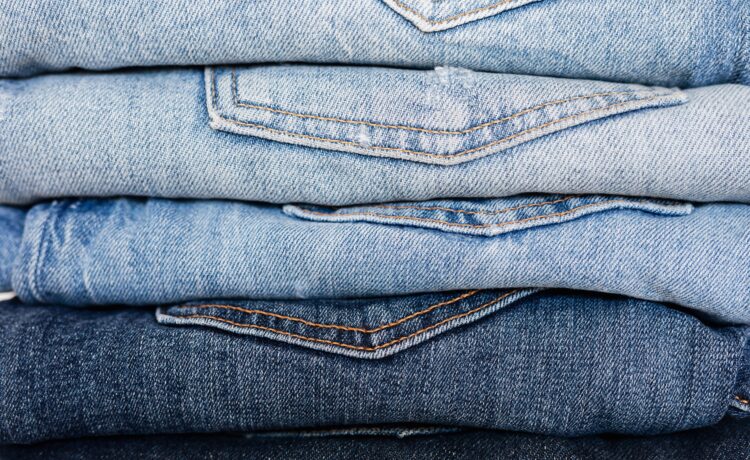Welcome fashionistas and conscious consumers alike! Are you ready to revamp your wardrobe with a purpose? Before you hit that “add to cart” button or head out on a shopping spree, let’s pause for a moment. In this fast-paced world of trends and instant gratification, it’s important to take a step back and consider the impact our choices have on the planet and society as a whole. So, whether you’re an eco-warrior searching for sustainable options or simply looking to make more mindful purchases, here are three essential things to know before you buy new clothes. Let’s dive in!
The environmental impact of fast fashion
The fashion industry has a dark secret lurking beneath its glamorous facade – the environmental impact of fast fashion. With trends changing at an alarming rate and clothing becoming increasingly disposable, our planet is paying a heavy price. The production of textiles requires vast amounts of water, energy, and chemicals, contributing to pollution and climate change. Not to mention the staggering amount of waste generated when these trendy pieces end up in landfills.
But it doesn’t stop there. Fast fashion also relies on cheap labor in developing countries, where workers face exploitation and unsafe working conditions. From sweatshops to unethical practices throughout the supply chain, this industry perpetuates social injustices.
By understanding the environmental impact of fast fashion, we can start making more informed choices as consumers. Opting for sustainable materials like organic cotton or recycled fabrics can significantly reduce our carbon footprint. Supporting brands that prioritize ethical manufacturing processes ensures fair treatment and wages for workers.
So next time you’re tempted by those flashy sales or must-have styles that will be out of vogue before you know it, remember that your purchasing power can make a difference. Choose quality over quantity; invest in timeless pieces that will stand the test of time rather than indulging in fleeting trends. Together, we can foster a more sustainable future for both fashion lovers and Mother Earth alike!
The importance of ethical and sustainable clothing brands
The fashion industry has a significant impact on the environment, and it’s crucial for us to consider the importance of ethical and sustainable clothing brands. While fast fashion may offer affordable options, its production practices often contribute to pollution, waste, and worker exploitation find more from www.blankclothing.com.au.
Choosing ethical and sustainable clothing brands means supporting companies that prioritize fair labor practices, use environmentally-friendly materials, and create durable products. These brands strive to reduce their carbon footprint by using organic or recycled fabrics and implementing eco-conscious manufacturing processes.
Investing in ethical fashion also promotes social responsibility. By supporting these brands, we help ensure that workers throughout the supply chain receive fair wages and safe working conditions. This not only benefits garment workers but helps combat poverty in communities heavily reliant on the fashion industry.
Additionally, opting for sustainable clothing offers long-term benefits for our wardrobe. Ethical brands focus on creating timeless pieces that are designed to last rather than following fleeting trends. This approach encourages consumers to build a more versatile wardrobe with high-quality garments that can be mixed-and-matched for various occasions.
When considering your next purchase, take time to research different brands’ sustainability initiatives and certifications such as Fair Trade or GOTS (Global Organic Textile Standard). By making conscious choices about where we spend our money when it comes to clothing, we can contribute positively towards a more sustainable future without sacrificing style or quality.
Tips for building a sustainable and versatile wardrobe
When it comes to building a sustainable and versatile wardrobe, there are a few key tips that can help you make conscious purchasing decisions. First, focus on quality over quantity. Instead of buying cheaply made clothes that will quickly wear out or go out of style, invest in well-made pieces that will last for years.
Another tip is to choose timeless styles and neutral colors. This allows you to mix and match your clothing items easily, creating multiple outfits from just a few pieces. By opting for classic designs rather than trendy fads, you’ll be able to wear your clothes for longer without feeling like they’re outdated.
Additionally, consider the versatility of each item before making a purchase. Can it be dressed up or down? Is it suitable for different occasions? The more uses you can find for an item, the more value it brings to your wardrobe.
Don’t forget about sustainability when shopping! Look for brands that prioritize ethical production practices and use eco-friendly materials. Many companies now offer organic cotton options or recycled fabrics which have less impact on the environment.
Don’t underestimate the power of secondhand shopping. Thrift stores and online marketplaces are treasure troves of unique finds at affordable prices. Buying secondhand not only reduces waste but also gives pre-loved garments a new life in your closet.
By following these tips, you can build a wardrobe that not only reflects your personal style but also supports ethical fashion practices while minimizing environmental impact
Benefits of buying secondhand or vintage clothing
When it comes to building a sustainable and versatile wardrobe, one of the best things you can do is to buy secondhand or vintage clothing. Not only does this help reduce waste and minimize the environmental impact of fashion, but it also allows you to find unique pieces that reflect your personal style.
One of the major benefits of buying secondhand or vintage clothing is that it adds character and individuality to your wardrobe. Unlike mass-produced fast fashion items, these clothes have a story behind them. They often come with their own history, making them truly special and one-of-a-kind.
In addition, buying secondhand or vintage clothing is much more budget-friendly compared to purchasing brand new items. You can find high-quality pieces at a fraction of the cost, allowing you to stretch your fashion budget further. Plus, by investing in pre-loved garments, you’re supporting local thrift stores or online sellers who may rely on these sales for their livelihood.
Another advantage is that buying secondhand promotes sustainability by reducing textile waste. The fashion industry produces enormous amounts of waste each year due to overproduction and discarded garments filling up landfills. By choosing secondhand options instead, you’re extending the lifespan of existing clothing and minimizing your contribution to this wasteful cycle.
Furthermore, shopping for pre-owned clothes gives you access to styles from different eras that are no longer available in mainstream retail stores today. Whether you love retro looks from the ’70s or elegant silhouettes from the ’50s, exploring secondhand markets opens up a world of timeless fashion possibilities.
Incorporating secondhand and vintage items into your wardrobe not only helps protect our planet but also allows you to express yourself through unique pieces while keeping an eye on your bank account balance. So next time you need something new in your closet repertoire, consider giving pre-loved garments a chance – after all: “One person’s trash is another person’s treasure.”
How to determine your personal style and make conscious purchasing decisions
Determining your personal style and making conscious purchasing decisions are essential steps towards building a sustainable wardrobe. By understanding your preferences, values, and lifestyle, you can curate a collection of clothes that truly reflects who you are while minimizing your impact on the environment.
To determine your personal style, take some time to explore different fashion aesthetics, whether it’s through magazines, Pinterest boards or even window shopping. Pay attention to what catches your eye and resonates with you. Consider factors such as colors, patterns, silhouettes, and textures that make you feel confident and comfortable.
Once you have a clearer idea of your personal style, it becomes easier to make conscious purchasing decisions. Seek out brands that align with your values in terms of sustainability and ethics. Look for certifications such as Fair Trade or organic materials to ensure the clothes are produced under fair working conditions without harming the environment.
Another way to build a sustainable wardrobe is by embracing secondhand or vintage clothing. Thrift stores, online marketplaces like Depop or local swap events offer unique pieces at affordable prices while reducing waste in the fashion industry.
Remember that investing in quality pieces rather than cheap fast-fashion items will not only benefit the environment but also save money in the long run. Quality garments tend to last longer and withstand trends better than their disposable counterparts.
By following these tips – understanding the environmental impact of fast fashion; supporting ethical and sustainable clothing brands; building a versatile wardrobe through secondhand finds; determining our personal style – we can all play a part in making more conscious choices when it comes to buying new clothes. Let’s embrace sustainability with open arms and create positive change within the fashion industry!





